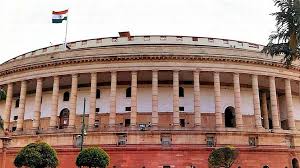23 Nov 2021 What is the constitutional procedure to repeal any law?

- It has been almost 14 months since the agriculture laws were implemented by the central government. These laws are constantly being opposed by a large section of farmers.
- Meanwhile, Prime Minister Narendra Modi announced the withdrawal of these agricultural laws. He said in his address that the government had brought these three laws with a good intention, but it could not explain its point to the farmers.
- He further said that in the Parliament session beginning at the end of this month, the government will abolish all the three laws through constitutional process. On the other hand, farmer leaders say that laws do not get repealed just on the advice of the Prime Minister.
- Farmers will continue the agitation till these laws are repealed through constitutional process.
- Actually on 17 September 2020, for the purpose of agricultural reform, the Central Government passed three agricultural laws in the Parliament.
The names of these laws are-
- Farmer’s Produce Trade and Commerce (Promotion and Facilitation) Act, 2020
- Farmers (Empowerment and Protection) Agreement on Price Assurance and Agricultural Services Act, 2020
- The Essential Commodities (Amendment) Act, 2020
- According to the government, the purpose of these laws is to create a business area outside the limits of Agricultural Produce Market Committees (APMC) free from middlemen and government taxes.
- This would have helped in reducing government interference in agricultural trade. Also, with the combined effect of these laws, the way to create ‘One Nation, One Market’ for agricultural produce will be facilitated.
- But apart from these arguments of the government, a large section of farmers started opposing these laws. After all the upheaval, now the government has decided to withdraw these laws.
- The process of withdrawing any law is almost the same as the procedure followed in Parliament to make a law.
It consists of several steps, we will discuss all the steps in turn.
- In the first phase, the law ministry informs the concerned ministry about the law to be amended or the law to be repealed.
- After this, in the second phase, the minister of that concerned ministry introduces the bill in the Parliament.
- In the third phase, this bill is passed by a majority of both the houses of the Parliament, that is, the Lok Sabha and the Rajya Sabha.
- After being passed by both the houses, this bill is sent to the President in the fourth phase.
- In the last or fifth stage, the President gives his assent to this bill and as soon as the President’s assent, the government informs about the end of that law through a notification in its gazette.
- Another important point here is that the hearing against agricultural laws is going on in the Supreme Court as well. In such a situation, some experts say that these laws can also be struck down by the Supreme Court.
- In this the government can express its consent to repeal these laws by filing an affidavit in the Supreme Court. After this, through the order of the Supreme Court, these laws will be repealed.


No Comments